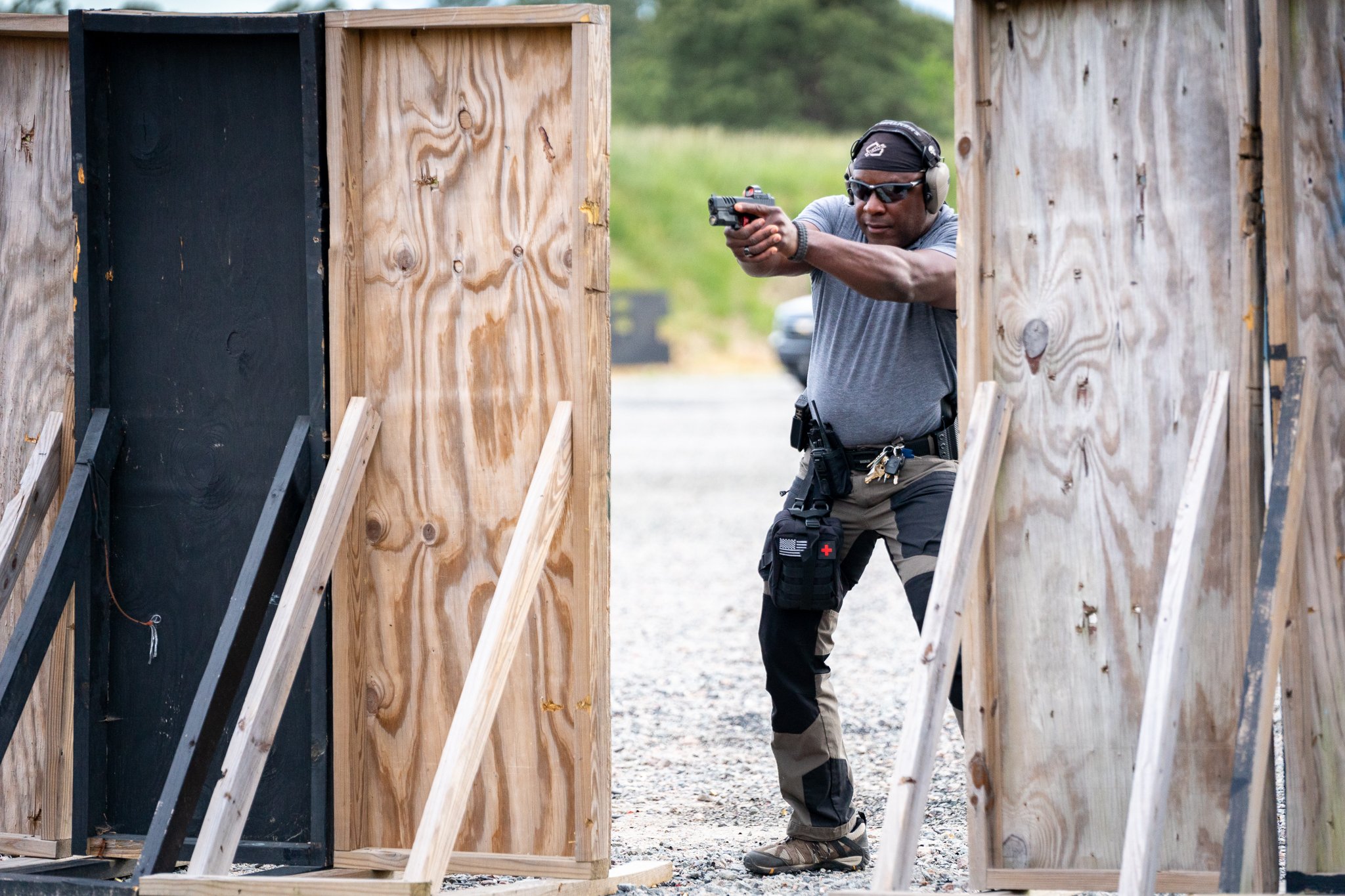When we consider the Gun Fighting Essentials, cover and concealment are part of that category. However, when talking with folks who are new to firearms and the realm of protection, as well as many who already have experience, a surprising number of them are unfamiliar with the significance and fundamentals of cover and concealment.
This is an important subject so let's jump straight into it so you can use cover and concealment to your advantage to become a formidable force when it comes to keeping yourself and loved ones out of harm's way.
This is Hank Hayes of Intuitive Self Protection and No Lie Blades (NLB). If you’re new to ISP and NLB, we’ve been in the professional space since 1998 and have had the privilege of training over 30,000 law enforcement, military, and Special Ops teams to date.
Check out this video to see our cover and concealment training setup. We have a trailer, a conex box, and a prefab building. You might think a conex box is a good piece of cover but, it’s not the best because a pistol round will rip right through that bad boy. It's great concealment along with a moving trailer, but they are no good for cover.
Want More Free Pro Training, Interviews, and Discounts on More Advanced and Live Training?? Click Below to Join Our Email List
Why Do We Need Cover And Concealment?
So, let's talk about the differences here. Concealment stops eyes (from spotting you), and cover stops bullets. We need to expand on that because there are different types of cover. Something like a cinder block will stop a 9mm but will not stop a 223 or 556 round. So, in the heat of a gun fight, we have to know what rounds are being used and what cover we need to use for it.
Using Cover And Concealment Properly
Let's talk about using cover or concealment properly in relation to how we want to use it to shoot from behind. We don't want to suck right up on a place of cover and concealment. When you’re too close to the surface, too much of your body will be exposed when trying to shoot. Not to mention, you won’t have enough room to fully extend your arms to engage your shot properly.
Now, if you stand off a bit from the cover or concealment, you can engage your shot properly, and you can even lean your body out to take the shot if needed.
Knowing the ins and outs of cover and concealment can truly make a difference in your approach. It's a game changer when used correctly. Understanding what strategies work and what doesn't will bring you a sense of calm and enable you to maintain the right mindset during a fight.
I say this to illustrate having bullets coming your way will immediately start breaking down your nerves and if you don’t have your act together its going put you on your heels. Learning this properly will give you the position of advantage.
Conclusion
We've discussed the crucial difference between cover and concealment, helping you understand how to protect yourself effectively. Remember, cover stops bullets, while concealment stops eyes; keeping you hidden. Use these insights to position yourself correctly, maintaining a safe distance from cover or concealment, allowing you to engage your shots with precision and ensuring your safety.
We have many free trainings available, and we have discounts on online, private, semi-private, and corporate training. We also have live 1, 2, and 3 day courses.
To snag the FREE gun fighting essentials video series and the killer 20% course discount code jump in below now…
If you're craving more content like this, sign up for our email list, delve into our website, and show your support by liking, sharing, and subscribing to our Instagram, Facebook, and YouTube channel. Stay tuned, stay connected, and stay locked and loaded!
About The Author
Hank Hayes is a Combat Arts Hall of Famer and inventor of the No Lie Blade. He is the founder and CEO of both Intuitive Self Protection and NLB Tactical and creator of the ISP/NLB viscous fighting system. Since 1998, he has trained well over 30,000 Military and Law Enforcement personnel via Government contract mainly at the elite special teams level and continues to train both civilians and MIL/LE how to come home safe.



